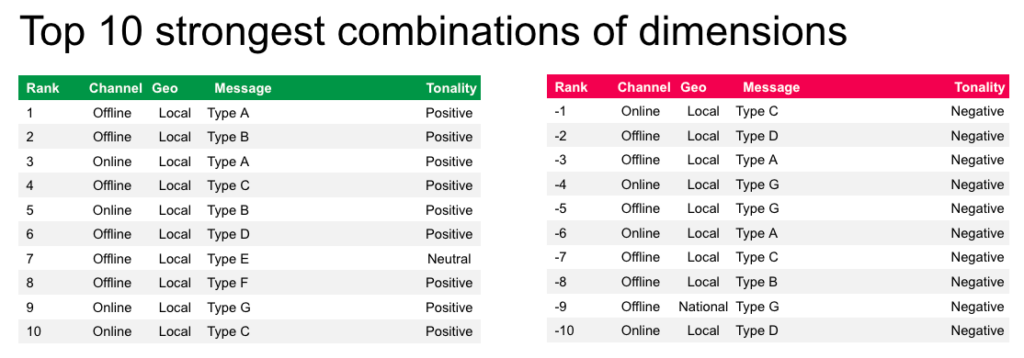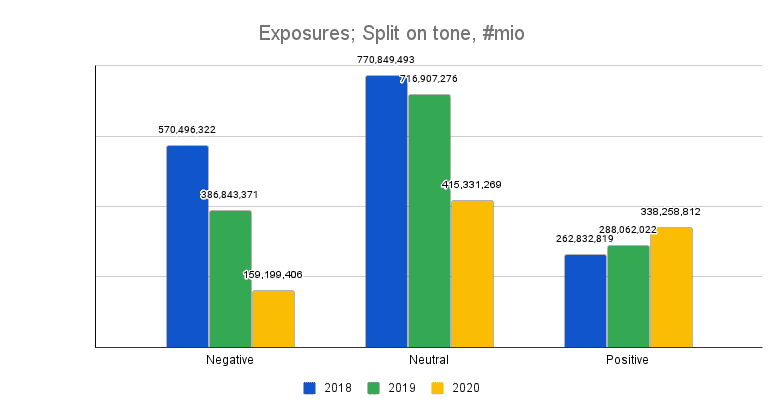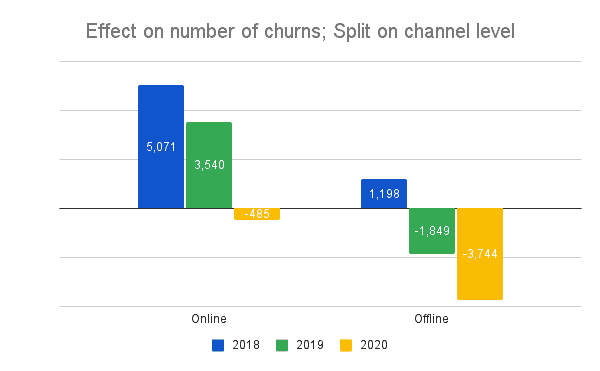Many companies struggle with determining the true effects of Public Relations. Companies are aware that PR has an effect on sales, but quantifying to what extent PR matters, potential pitfalls and the advantages of utilising PR can be hard to determine without the proper knowledge.
Luckily HamiltonAI can help alleviate these uncertainties, and enable companies to align their PR and actively use it to drive business by acquiring new customers and preventing churn. This is especially useful in industries, where companies experience a high degree of customer churn or are highly impacted by PR.
A large, global telco is a prime example of what you can gain from modeling the effects of PR. Before working with HamiltonAI the company already had an inkling that PR had an effect on commercial performance and number of new customers. The main challenge though, was a lack of operationality in their analysis.
A clearer picture
If the PR department is to work most efficiently, they need to know which stories they should focus on in order to generate the sort of PR that generates new customers, and prevent existing ones from leaving.
The advantage of using HamiltonAI is gaining the ability to make PR a proactive tool rather than just a reactive tool.
When working with PR, the tasks are often centered around improving company reputation by preventing negative press. Before working with HamiltonAI, the PR-analysis was primarily done by looking at the topic of a given PR-exposure, and then determining whether it was negative or positive.
The problem was that this approach wasn’t sufficient enough to give satisfying answers, about the actual effect of the media exposure.
To make PR operational and use it to gain customers, companies need more knowledge about “which type of stories carries the biggest weight?”
Creating the guidelines
After analyzing the company’s PR exposures – and adding granularity to the data – a list showcasing the strongest positive and negative combinations of dimensions was created.
These lists of guidelines enable the company to streamline their PR work, make more measured decisions and use the PR department actively in creating positive business outcomes.

For this specific customer especially offline, local exposure had a massive positive effect per exposure, with different impact depending on the theme of the PR. So even though the number of online, national exposures was by far the most present overall, the effect per exposure of these dimensions wasn’t actually all that big.
The message types are anonymized and refer to the theme of the PR exposure. To give an example, this would mean that a news article about hacking would be included in the message type ‘Safety’.
Adding granularity
So how does it work? To analyze the effect of the combinations of dimensions, the available data needed a higher level of granularity. As mentioned the theme of each exposure was analyzed. These were then grouped into seven distinct thematic categories or ‘message types’, which could be e.g. Customer Experience.
Furthermore the data included three different types of tonality (positive, neutral, negative), whether or not the exposure came in national or local media, and lastly if it was online media or offline media (this being TV, Radio and Newspapers).
In all this gave 84 unique combinations of the message, tonality, channel and geography fitted to the observed exposures. The main goal was to determine which of these combinations had the biggest positive and negative effect on customer acquisition and churn.
From generating to preventing churn
The company had 3.2 billion exposures across the observed media channels in the analyzed period, which ran between January 2018 and November 2020. The amount of people being subjected to stories about this company was therefore huge.
The largest share of exposures came via online, national media.
Overall the number of exposures actually declined throughout the period. This was primarily due to a big decrease in the number of negative and neutral exposures. The decrease was partly attributed to the fact that a major news story about the company was present in 2018, but also because a strategy to minimize negative mentions was implemented.
During the years the number of positive exposures remained fairly stable with a slight increase seen.

The fact that the negative exposures were minimized meant that even though the overall level of exposure markedly reduced, both offline and online media went from generating churn in 2018 to preventing churn in 2020. (In the chart below measuring churn, negative or minus means less churn).

PR as a business driver
By quantifying the effect of the different combinations of dimensions, the PR department now has an operational model in effect. This means that the company can make levelheaded decisions, and streamline their PR because they know which type of “good” stories should be pushed through certain channels, and what “bad” stories that need to be prevented and/or attacked.
The model can be continuously updated, and take new data into account, offering new dynamic insights.
Furthermore the model is able to look at the prevented or generated churn on a day to day level. These insights can then be used to correlate these negative or positive peaks in churn, with specific articles that were prominent in the media at the given time.
The insights from HamiltonAI offers a functional and operational model that can be implemented in the day to day work of the PR department. The added knowledge enables them to work with, and understand how, they create or inhibit new customers.
The model provides value for larger companies that naturally get a lot of exposure due to their size. Adding knowledge empowers them to pursue possibilities in the PR-sphere, and have a higher degree of confidence that they will actually succeed with them. Implementing model driven decision making enables the PR department to become a bigger and more effective business driver for the entire company.
